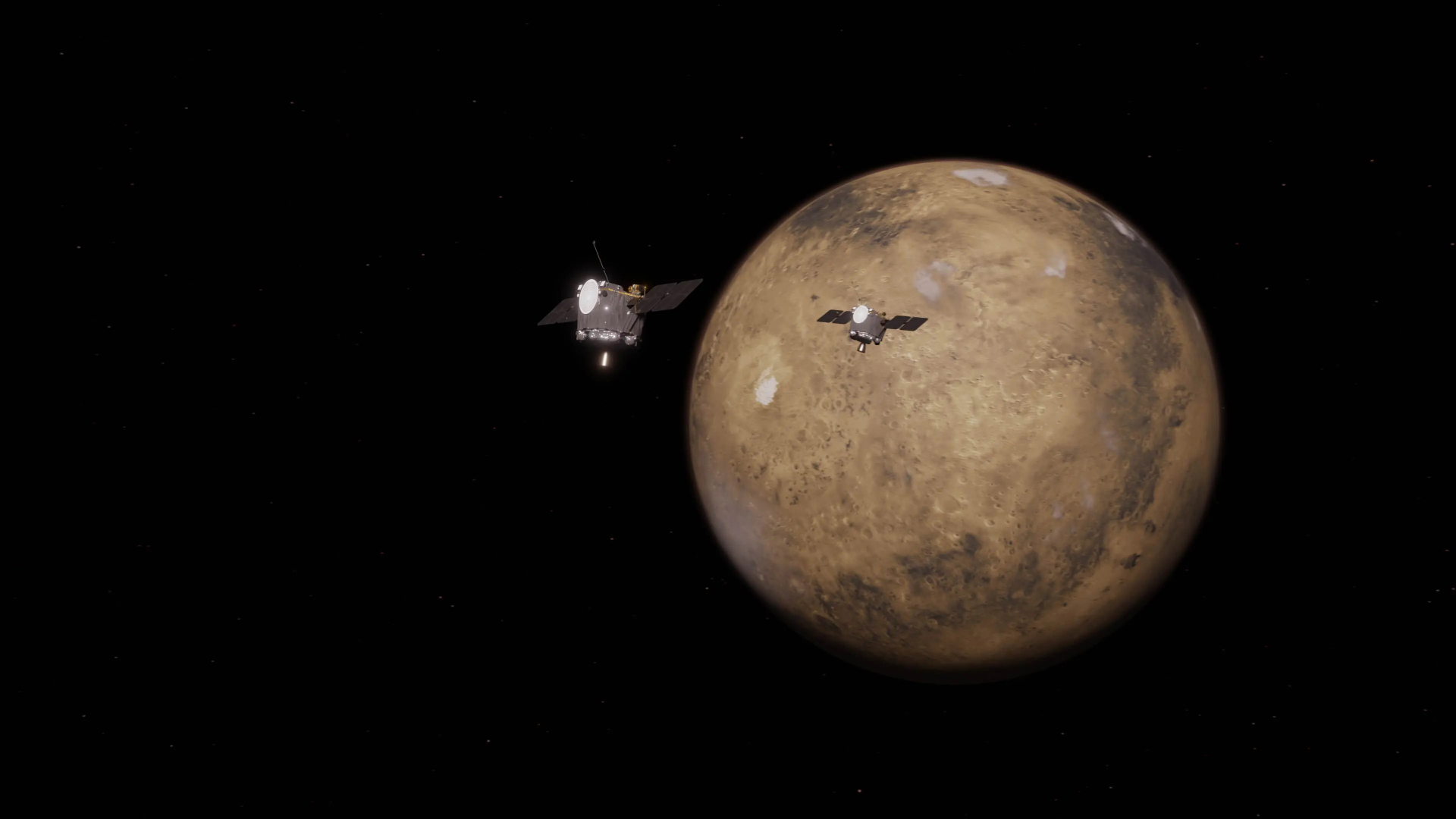Astronauts Begin Space Construction Job

Thisstory was updated at 7:22 p.m. EDT.
Astronautsaboard the docked shuttle Discovery and International Space Station began a toughtwo-day task Wednesday that will ultimately add a new pair of solar wings tocomplete the station?s power grid.
The10-astronaut crew of the linkedshuttle and station gingerly plucked the nearly 16-ton addition for theorbiting lab out of Discovery?s payload bay in order to move into position forits final installation during a Thursday spacewalk
?We arelooking forward to today, getting that [truss] on its way,? said Discoveryastronaut Steve Swanson, who will help bolt down the massive girder intomorrow?s spacewalk.
Thestation?s new Starboard-6(S6) truss is a 45-foot (nearly 14-meter) long girder destined for theright side of the space station?s backbone-like main truss. It weighs 31,000pounds (14,061 kg) and is the final piece of the station?s 11-segment truss,which will span more than 300 feet (91 meters) from end-to-end when complete -longer than an American football field.
Twowing-like solar arrays, each 115 feet (35 meters) long, are folded away likeoversized maps in boxes on the end of the $298 million segment. Discoveryastronauts plan to installthe array-laden girder in Thursday?s spacewalk and unfurl them as early asFriday.
The solarwings are the fourth, and last, set of U.S. solar arrays for the space station?spower grid, which will generate enough electricity to power 42 average sizedhomes, NASA has said.
Breaking space news, the latest updates on rocket launches, skywatching events and more!
?It?s goingto give us all sorts of power to get us to do the kind of science the spacestation was designed for,? shuttle flight director Paul Dye told reporters lateTuesday.
Discovery?screw initially planned to unfurl the new solar wings on Sunday, but missionmanagers said they might move it up to Friday if the astronauts did not need toperform an extra heat shield inspection that day.
So far,images from a Tuesday photo survey revealed only one relatively minor dingedheat-resistant tile of note on Discovery?s underbelly and mission managersdecided to forgo the extra inspection. Mission Control radioed the news up theshuttle astronauts late Wednesday.
?That?s absolutelygreat news,? shuttle commander Lee Archambault replied.
Slow andsteady
Astronautshad to take great care movingthe massive new girder, which required the use of robotic arms aboard thespace station and Discovery. At times, the 16-ton truss was just inches awayfrom the space shuttle, with little room for error.
?It canswing a little bit, so we?ve got to be really careful about that,? Discoveryastronaut John Phillips said in an interview before the shuttle?s Sundayevening launch. ?I wouldn?t say that we have to wiggle it out, but we?re notjust picking it straight up. It?s kind of a big deal.?
The orbitalextraction went smoothly, with Phillips and Discovery astronaut Sandra Magnususing the station?s Canadarm2 robotic arm to latch onto the starboard-sidetruss and ease it out of the shuttle?s cargo bay. They handed the segment offto Discovery?s robotic arm, and moved their own station appendage into positionto take back the massive girder and park it overnight.
The movebegan at about 11:38 a.m. EDT (1538 GMT) and lasted more than six hours.
Spacestation commander Michael Fincke radioed down to Mission Control that camerasinside the space station were available to watch the astronauts move theoutpost?s newest addition.
?We want toshare the great adventure with you all,? Fincke said.
Dye saidevery move must be controlled perfectly to avoid breaking the robotic arms,losing control of the massive girder at the end of the outstretched limbs, orovertaxing the space station?s attitude control system.
?Obviouslywe want to make sure that we don?t bump into anything,? Dye said.
Shuttlepilot Dominic ?Tony? Antonelli and mission specialist Joseph Acaba will controlDiscovery?s robotic arm during the move. Acaba, a teacher-turned-astronaut, andfellow educator astronaut Richard Arnold II are also due to discusstheir spaceflight with the Channel One educational channel later today.
Discovery?sseven-astronaut crew is in the midst of a 13-day mission to deliver the newsolar arrays and swap out one member of the station?s Expedition 18 crew.Japanese astronaut Koichi Wakata, who launched aboard Discovery, replacedMagnus as a station flight engineer late Tuesday. Magnus will return homeaboard the shuttle when it lands on March 28.
NASA cut aday and a spacewalk from the mission, which was initially slated to includefour spacewalks and run 14 days, in order to complete the construction flightbefore the arrival of a previously scheduled Russian Soyuz flight bearing a newstation crew and an American space tourist.
Dye toldreporters that mission managers continue to rework the mission plan forDiscovery?s crew, including moving tasks from the canceled spacewalk into theflight?s third excursion.
?I thinkyou?re going to see non-stop action, especially on the station,? Dye said.
SPACE.comis providing continuous coverage of STS-119 with reporter Clara Moskowitz andsenior editor Tariq Malik in New York. Click here for missionupdates and SPACE.com's live NASA TV video feed.
- New Video - Discovery?s STS-119 Night Launch
- Video - Discovery's Mission: Space Station Power Up!
- New Show - Inside the International Space Station

Tariq is the award-winning Editor-in-Chief of Space.com and joined the team in 2001. He covers human spaceflight, as well as skywatching and entertainment. He became Space.com's Editor-in-Chief in 2019. Before joining Space.com, Tariq was a staff reporter for The Los Angeles Times covering education and city beats in La Habra, Fullerton and Huntington Beach. He's a recipient of the 2022 Harry Kolcum Award for excellence in space reporting and the 2025 Space Pioneer Award from the National Space Society. He is an Eagle Scout and Space Camp alum with journalism degrees from the USC and NYU. You can find Tariq at Space.com and as the co-host to the This Week In Space podcast on the TWiT network. To see his latest project, you can follow Tariq on Twitter @tariqjmalik.
